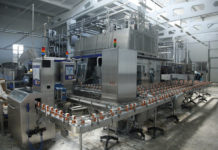The causes of soil pollution
So yes, rocks and soils change over time. Certain natural events such as ash fallout linked to volcanic eruptions will modify the structure and life inside the soil. But the large-scale pollution and the collapse of biodiversity that we observe today are linked above all to human activities, and in particular to intensive agriculture which plays a leading role.
Agricultural pollution
In certain regions of the world such as North Carolina, the use of pesticides and fertilizers has grown exponentially in recent years. It contains a large part of nitrogen which offers an excellent source of nutrients for crops, provided that certain quantities are not exceeded. However, between fertilizers and manure, the production of which has increased by 66% in less than 60 years with the proliferation of livestock farming, the nitrogen levels in the soil have reached critical thresholds.
At this stage, this changes the acidity of the soil and the type of plants capable of growing there. The overflow is evacuated by rain or irrigation water to rivers and groundwater. Insoluble and non-biodegradable, it will then cause massive nitrate pollution even in our drinking water with increased risks of cancer and respiratory diseases.
As for the use of chemicals, the findings are overwhelming. Bangladesh has already quadrupled its use of pesticides over the past decade, Sudan has increased it tenfold, and it is estimated that the use of such products will increase by about 3.4% each year until ‘in 2030. And recycling is not used enough to alleviate this problem!
Mining
In other regions on the contrary, the soil is not sufficiently nourished by fertilizers but resource extraction projects continue without the nutrients being able to be renewed. In its wake, mining causes significant damage and widespread pollution due in particular to the diffusion of heavy metals naturally present in the soil.
These are degraded to the point of exhaustion, which necessarily impacts yields year after year.
Industrial and construction activity
Through toxic discharges and the exploitation of fossil resources, industrial activity has been one of the main contributors to soil pollution over the last century. Coal, iron ore or chemical waste, the elimination of which is never entirely safe, persist on the surface of the ground and cause widespread contamination, especially since certain products are capable of moving more easily in the air in the form of fine particles.
And then, some projects involve the demolition of old buildings that can release asbestos, which is particularly toxic, the particles of which will be redistributed by the wind. Dumpster rentals can be used to remove some of this waste though (check this website).
Urbanization
Many healthy soils are also simply concreted over to meet the growing demand for urbanization. Every year on Earth, no less than 70,000 hectares of asphalt and concrete appear, the equivalent of one department every 7 years. This is what we call soil artificialization. Beneath the concrete, the soil has been mixed and compacted to the point that neither water nor plant roots can circulate properly. Under these conditions, life finds it extremely difficult to thrive again.
Worse still, artificialization occurs in France even when it is not necessary. We concrete to create new residential spaces or activity zones even though there is no real demand. Ultimately, France has already lost a quarter of its agricultural area over the last 50 years.
Transportation
Along the roadside, road traffic causes impressive pollution based on heavy metals and hydrocarbons, capable of contaminating nearby crops and pastures. More than 90% of lead contamination is linked to automobile traffic.
Polycyclic aromatic hydrocarbons (PAHs)
Generally released by the combustion of organic matter such as that of fossil fuels or during forest fires, they prove to be highly toxic for our health and for the environment. Although they are not biodegradable, they are, however, particularly soluble in the form of particles and attach without difficulty to living tissues, suspended matter or sediments in watercourses.



